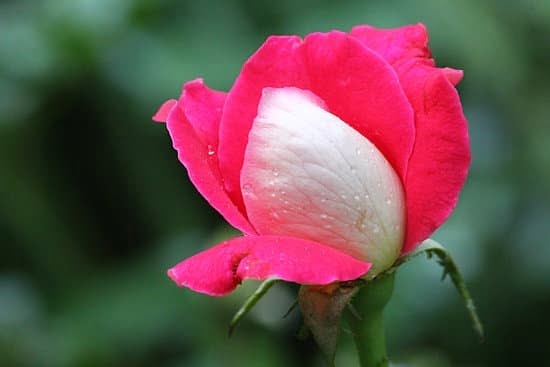Introduction
The Georgia Gardening Zone is typically in the south-eastern United States. The climate of the area is generally mild to hot in the summer months and cool to cold in the winter months, making it suitable for a variety of plants. It lies within USDA hardiness zones 6B through 8A.
This gardening zone is perfect for growing a wide variety of trees, shrubs, flowers, vegetables and herbs. Many of these plants are drought-tolerant due to the fact that Georgia receives plenty of sunshine throughout the year. Plants may also benefit from extra compost or mulching during long dry spells. Generally, summer temperatures can range from highs in the 90s with ample humidity, to cooler evenings. Winter lows can dip into single digits on occasion with light snow possible.
Gardening in Georgia boasts many benefits for experienced gardeners and green thumbs alike – from fresh bounty from spring through fall, fragrant blooms throughout the warm months and easy plant care given the warm climate and relatively low pest presence compared to other regions. There are few places more pleasant than lounging under a blooming shade tree in Georgia’s late spring or picking vegetables right out of your own garden come summertime!
Identifying Your Gardening Zone
Georgia gardening zone is an important consideration when cultivating your dream garden. Knowing which zone you live in helps determine the types of plants that are hardy and will thrive in your climate. The U.S Department of Agriculture has divided out the entire country into 11 hardiness zones based on average winter minimum temperatures. Georgia falls predominantly in Zone 8, with some higher elevation locations falling into Zone 7b or even Zone 6b.
In general, as one moves from north to south across the state, Zone 8A governs the northern portion of the state and Zone 8B dominates over most of the southernmost points. There is also a small area of Northwest Georgia that falls under Zone 7B along with a very select location at the extreme northeast of Georgia which may fall under Zone 6B. With this information, master gardeners can take note which plants and trees can grow in their exact region. For example, some subtropical trees such as citrus thrive best in warmer areas while cold-hardy evergreen varieties may be better suited for cooler temperatures where they won’t experience shock during drastic cold snaps. Additionally, knowing what zone you live in can provide insight towards growing seasons such as when to start planting vegetables each year so they will have time to endure frost and hit optimal harvest times prior to frost damage taking effect again.
What Can You Plant in Georgia?
In the Georgia gardening zone, some of the most popular vegetables to grow include tomatoes, green beans, peppers, eggplants, carrots, onions, sweet potatoes, and squash. Some of the more popular fruits for this region are peaches, apples, oranges, pears and blueberries. As for flowers and shrubs some suggestions include petunias, azaleas and rhododendrons which all thrive in cooler weather. Hostas are hearty plants that will do well in both warm and cool temperatures. Clematis is a beautiful climbing flowering vine that can be used on walls or arbors to add color and texture to your garden. A variety of herbs such as oregano thyme rosemary parsley and sage also do well in Georgia’s climate so you can have a nice selection for your culinary needs. Finally don’t forget about evergreen trees! The Leyland Cyprus tree is an excellent choice with its fast-growing program providing lots of privacy while still maintaining its green needles throughout the winter months.
Growing Tips for Georgia
Soil Preparation: Georgia gardens should be planted in nutrient-rich soil. The best way to make sure that your garden soil is up to snuff is to take a soil sample and have it tested for pH, nitrogen levels, and other essential components. Depending on the results of your test, you may need to add compost, manure, or lime to balance out your pH level. If you are growing a lot of vegetables, consider adding composted cow manure or chicken manure as an additional nutrient source.
Planting & Harvesting Times: When planting your garden in Georgia, timing is key! Knowing when the last frost of the season will occur will help you get a jump start on your planting schedule so that you can maximize the potential harvest throughout the growing season. Peak harvest times will vary by plant, so be sure to read up on the specifics of each variety before planting. Be sure not to wait too long accomplish this task either – warm season crops such as tomatoes and peppers should be planted from mid-April through mid-May for optimal results.
Irrigation & Fertilizing Schedules: It is important to water your garden regularly in order for all of your plants to receive an adequate amount of moisture at their roots without over saturating them. Ensure that there are no pockets of dryness – particularly when dealing with newly planted items – by irrigating more frequently during peak temperatures and periods of low rainfall. As far as fertilizing goes, using an organic fertilizing method is most beneficial as it provides slow release nutrition over time rather than creating immediate spikes in plant growth which can lead to irregular development and blossom rot among other issues. Be sure to adjust quantities in accordance with soil composition and type.
Dealing with Pests and Disease
Identifying which pests and diseases are affecting your plants can be a difficult task. Look closely at the plants for signs of pest damage, such as wilting leaves or stunted growth. Checking the undersides of leaves can help you spot common pests like aphids, mites, and mealybugs. Similarly, inspect the soil for potential causes of root rot or fungal infections.
Once you’ve identified the problem, there are several methods you can use to manage pest and disease infestations. Non-chemical options such as horticultural oils and soaps help to suffocate or disrupt pests while being safe for humans, pets, and beneficial insects To reduce fungal diseases like powdery mildew or rusts try applying a neem oil based fungicide every seven to ten days on afflicted plants. New growth will be free from disease but it is important to continue treatments until all older growth is clear. As prevention is more effective than cure it is advised to rotate crops every season if possible; this helps avoid re-infestation by specific pests that thrive in their preferred conditions with plants they prefer eating. Furthermore use protective measures like plant row covers. These lightweight fabrics work by trapping hots in keeping temperatures elevated during chillier nights/nights and giving small growing protection from strong winds/winds, heavy rain/rainfall, hail etc., from frosting out younger young seedlings. While chemical cures exist for more stubborn cases certain insecticides that contain cruel ingredients should be avoided; pheromone traps are also available although are not suitable for some areas with large amounts of wind as they become odorless quickly due to environmental factors making them ineffective useless when used outside outside anyway !
Planting a Year-Round Garden
Georgia gardening zone 7a presents unique opportunities and challenges for year-round gardeners. Plants that thrive in Georgia can vary significantly depending on the season. During the winter months, some of the best choices are warmer weather plants like Amaryllis and Camellia buds which flourish during the colder months due to their tolerance or hardiness.
For springtime gardens, consider plants such as types of Hibiscus, Irises, and Begonias which need more daylight or full sun exposure in order to bloom throughout its season. Hostas, Japanese Maple trees, and Daylilies are perfect for adding contrast with their brightly coloured foliage.
As summer approaches, plants such as Chrysanthemums, Asiatic Lilies and Petunias fill up your garden with fragrant blooms. These flowers not only create colour but a wonderful aroma that lies in the air on a warm summer evening.
When fall arrives bring out the pansies, dianthus and asters for late-blooming perennials that can thrive until December’s cooler temperatures make them dormant again. For an autumnal display of colour add marigolds or mums to show off vibrant hues before their winter slumber hibernation arrives.
By choosing the right varieties of plants season by season your Georgia garden will bloom beautifully all year long creating a garden that’s full of life 12 months a year!
Regional Resources
Nurseries: There are a number of nurseries in Georgia that specialize in plants specifically adapted for the Georgia gardening zone. These nurseries stock both native and exotic species, as well as soil mixes and mulch that are specifically tailored for Georgia’s climate. Local knowledge is invaluable when it comes to selecting the right plants and materials for your garden, so be sure to ask around for advice. Many nurseries even offer classes and seminars on gardening techniques specific to Georgia’s unique climate.
Gardening Clubs: Gardening clubs are a great way of connecting with fellow gardeners in your area. As well as providing opportunities to exchange tips and techniques, many clubs offer lectures, workshops, and field trips which can help you get started or enhance your existing skills.
Products: There are various products available designed specifically for use in the Georgia gardening zone. These range from pruning shears to uniquely adapted growing containers that utilize natural resources such as air conditioning units or solar power to regulate temperatures. Additionally, there are numerous fertilizers and soils available locally that have been mixed especially for the region’s climate conditions.
Concluding Thoughts
The Georgia gardening zone varies based on the region. While most of the state enjoys warm, humid summers and mild winters, northern Georgia experiences colder winters than southern parts of the state. Overall, the best practices for successful gardening in Georgia include selecting plants that are native to the region or are known to thrive in Georgia’s climate and soil type. It is also important to give plants adequate amounts of sun, water, and nutrients throughout the growing season. Additionally, using mulch and organic matter can help protect root systems from temperature fluctuation as well as controlling weed growth and conserving moisture in between waterings. Finally, gardeners in Georgia must take into consideration seasonal changes aimed at fostering optimal growth conditions for their plants.

Welcome to my gardening blog! I am passionate about plants and enjoy sharing my knowledge and experiences with others. In this blog, I will write about everything related to gardening, from tips on how to get started to updates on my own garden projects.





